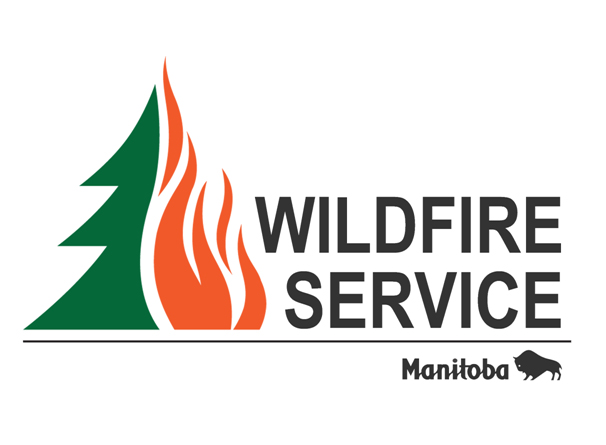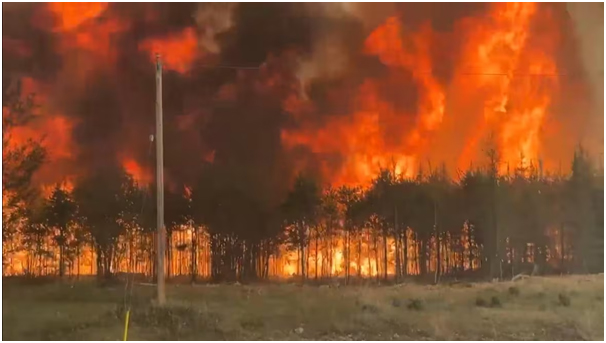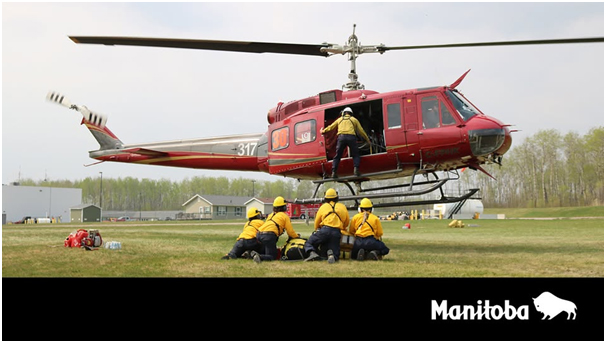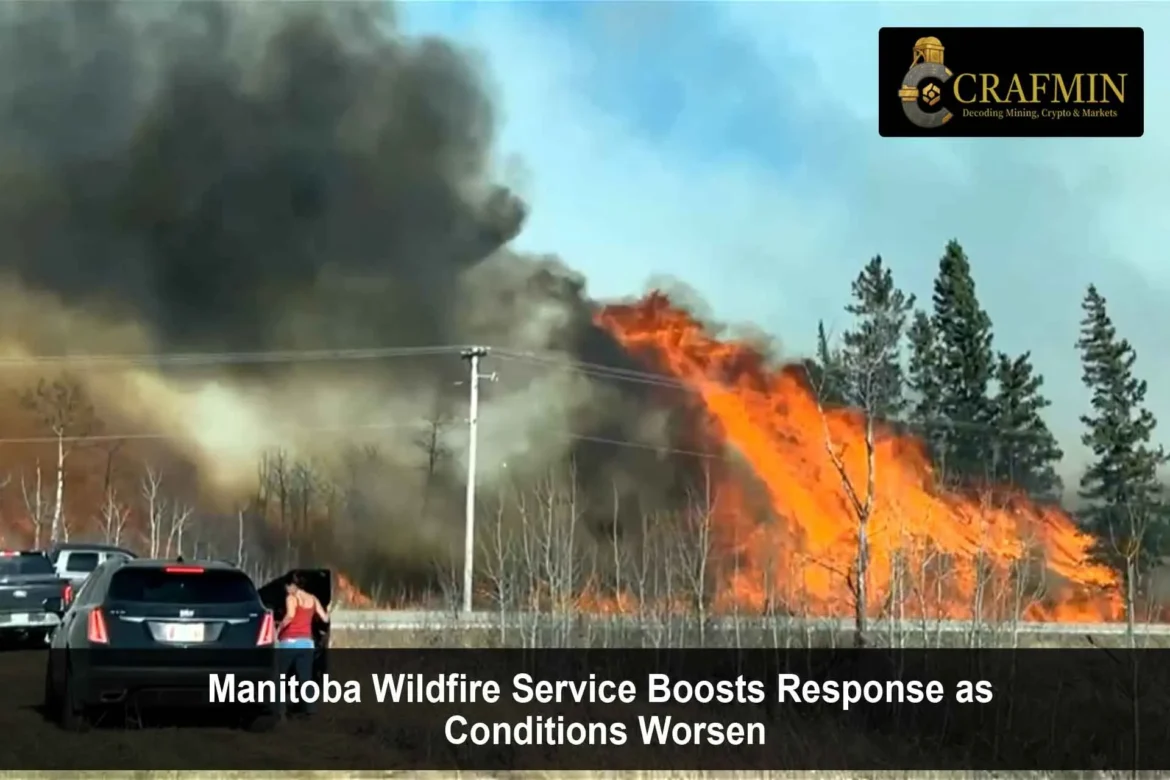Hot and dry weather fueled fires all over Manitoba. The province is deploying increased resources to go with this. Fires have been identified as lightning-caused ones; hence, they ignite quickly, especially near such remote communities as Leaf Rapids. The Manitoba Wildfire Service is apparently stepping up efforts. The new focal point will be helicopter-based fire suppression with another enhancement in evacuation logistics.

Lightning-sparked wildfires spread across Manitoba as hot, dry weather fuels rapid outbreaks near remote towns.
What is Driving Manitoba’s Wildfire Crisis?
Lightning-caused fires have been more commonly occurring over the last few weeks with thunderstorms traversing the central and northern regions. Each strike sparks a new ignition point. With the temperature going up and the conditions being dry, the soil layer has become extremely flammable. The woods themselves have become dry. The grass burn quickly. The flames are quickly travelling around the areas of Leaf Rapids. The threat to homes and health is ever-increasing.
Wildfire crews are operating against challenges on multiple fronts. Changed wind direction has rendered fire suppression activities even more uncertain. Smoke has reduced visibility. The fire’s growth is surpassing efforts on the ground. This situation has necessitated mounting reliance on aircraft to access otherwise hard-to-reach areas.

Rising heat and dry soil fuel lightning-sparked fires across central and northern Manitoba amid frequent storms.
Helicopter Firefighting Aircraft Now Essential
The fleet of helicopter firefighting aircraft has expanded under the auspices of the Manitoba Wildfires Service. These machines currently represent a frontline layer of defence as they service areas that ground crews simply cannot. Helicopters drop water straight onto fire hotspots. This slows down the fire’s progress and gives the crews composing perimeter control.
Helicopters are undoubtedly of immense help close to Leaf Rapids. Most of the fires in that area are remote. Road access to these areas is unpleasantly difficult. The helicopters thus come very fast, carrying out water drops with great precision; that speed of theirs is what counts in the fledgling stages of a wildfire.
Helicopters are also safer for firefighters. They lessen the chance for ground teams to enter precariously early into dangerous terrain. The teams, together with helicopter drops, will mean a potent fire suppression mix.

Manitoba boosts wildfire response with expanded helicopter fleet, targeting hotspots beyond ground crew reach.
How Are Evacuation Logistics Being Improved?
The matter of evacuation planning has grabbed acute attention. The Manitoba Wildfire Service, working alongside emergency response teams, is engaged in streamlining evacuation logistics. Communities in zones at higher risk, including Leaf Rapids, now have clearly defined routes marked for evacuation. These routes have been carefully planned in a way to ensure they would bypass all possibilities of congestion or fire.
Shelters are pre-positioned. Emergency vehicles, including buses and ambulances, are on call. This ensures faster evacuation once emergencies begin to escalate due to fires. Several communities have been running drills where people get acquainted with emergency procedures.
Local leadership has also made efforts to engage with the Indigenous population so that their cultural and regional requirements are considered. Communication is the backbone in this regard. Constant updates are being disseminated via radio, social media, and through mobile alerts. Whereas families are being prompted to have their “go-bags” ready, containing just the essentials.
Lightning-Caused Fires Increasing Rapidly
Lightning largely triggered many of this season’s wildfires. Unlike human-caused fires, these can strike without warning. A single lightning strike in a storm can set fire to an isolated tree or patch of dry grass. Fires often originate in remote areas beyond a watchtower or road access.
Hence, the a need for the deployment of helicopter fire-fighting aircraft. They can give a very early alert and respond even before the fire grows. In some cases, the helicopters are equipped with infrared cameras, which help locate hotspots that may be under the thick canopy of forests.
These helicopters are also key in backing up fire crews by delivering personnel and equipment to and from sites that would otherwise be inaccessible. This dual function increases their value considerably in lightning-caused wildfire events.
View this post on Instagram
Air Quality Risk Growing in Affected Regions
On account of the fires continuing to rage, smoke is drifting across communities. The situation is ripe for an air quality risk in several locations, and health advisories follow. Children, the aged, and persons with diminished respiratory health are at a larger risk.
In Leaf Rapids and other towns snuggled beside the active fire zones, residents are advised to remain indoors. Use of air purifiers and N95 masks is suggested. Schools may discourage outdoor activities. Health authorities are watching very closely the levels of PM2.5. This fine particulate matter can very well go deep within the lungs and cause or worsen asthma or any other form of respiratory disease.
Masks are being distributed by emergency services in some zones with high risks. Public awareness campaigns are guiding people in preparation. Air quality alerts are furnished to the people via mobile apps and websites.
Will the Wildfire Season Worsen Further?
The forecasters are of no help. More hot and dry weather is expected in the days ahead. The winds are very unpredictable. These are perfect conditions for the spreading of a wildfire. With forest areas already dry, Manitoba may be a witness to more lightning fires.
Close monitoring of conditions continues to be carried out by the Manitoba Wildfire Service. There may be additional deployments of helicopter firefighting aircraft. The residents in fire-prone areas are urged to remain alert. Then, any rapid evacuation may have to be carried out on very short notice.
Manitoba is also working with neighbouring provinces. Mutual aid agreements permit the sharing of aerial and ground resources. This kind of regional coordination adds strength to the response effort.
Also Read: Weather Radar Australia Advancements Set to Enhance Aviation, Safety, and Regional Infrastructure
Summary
The Manitoba Wildfire Service has had to act swiftly in the escalation of wildfire crises. Lightning-aided wildfires are burning near Leaf Rapids and beyond. Hot and dry weather will only fuel the dangers. In response, the province has taken on the use of helicopter firefighting aircraft so as to be quicker. Evacuation logistics have also been beefed up, and plans are in place to move people to safety. Meanwhile, air quality risks are at an ever-increasing level. Health warnings have been put out. With no immediate change in weather, Manitoba remains in a high-alert state.

